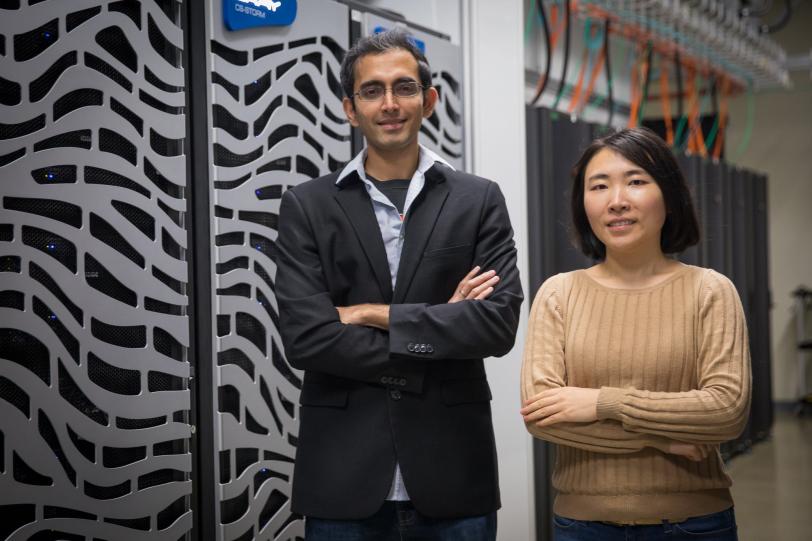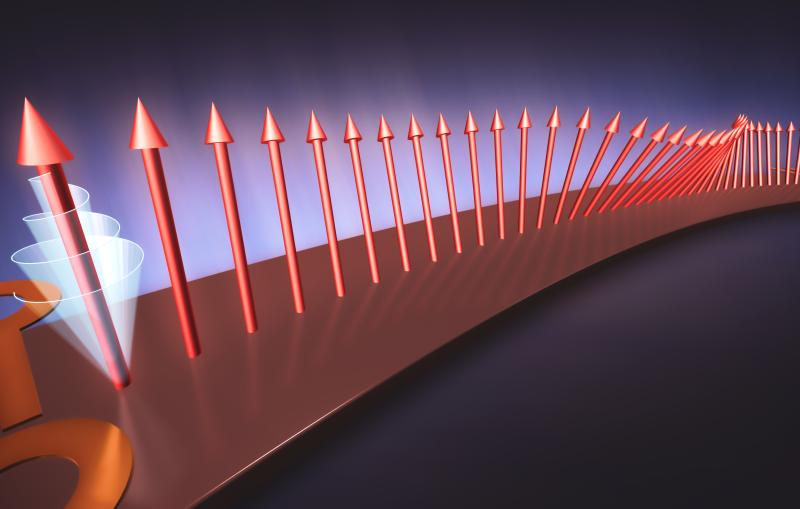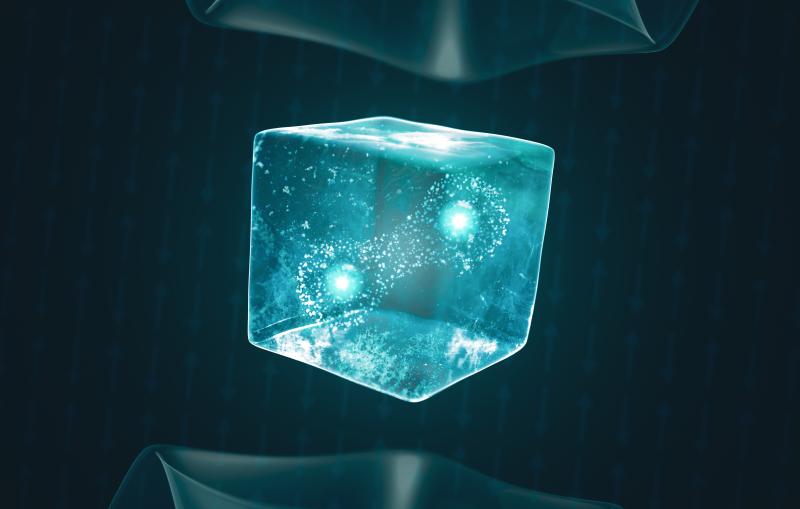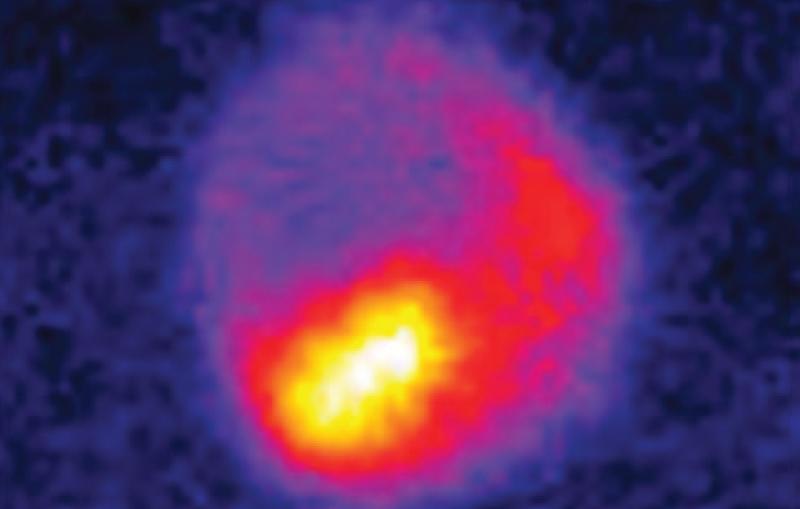New SLAC Theory Institute Aims to Speed Research on Exotic Materials at Light Sources
The Goal: Predicting How and Where to Find Materials with Potential for Revolutionary Impact on Society
By Glennda Chui
A new institute at the Department of Energy’s SLAC National Accelerator Laboratory is using the power of theory to search for new types of materials that could revolutionize society – by making it possible, for instance, to transmit electricity over power lines with no loss.
The Theory Institute for Materials and Energy Spectroscopies (TIMES) focuses on improving experimental techniques and speeding the pace of discovery at West Coast X-ray facilities operated by SLAC and by Lawrence Berkeley National Laboratory, its DOE sister lab across the bay.
But the institute aims to have a much broader impact on studies aimed at developing new materials for energy and other technological applications by making the tools it develops available to scientists around the world.
TIMES opened in August 2016 as part of the Stanford Institute for Materials and Energy Sciences (SIMES), a DOE-funded institute operated jointly with Stanford.
Materials that Surprise
“We’re interested in materials with remarkable properties that seem to emerge out of nowhere when you arrange them in particular ways or squeeze them down into a single, two-dimensional layer,” says Thomas Devereaux, a SLAC professor of photon science who directs both TIMES and SIMES.
This general class of materials is known as “quantum materials.” Some of the best-known examples are high-temperature superconductors, which conduct electricity with no loss; topological insulators, which conduct electricity only along their surfaces; and graphene, a form of pure carbon whose superior strength, electrical conductivity and other surprising qualities derive from the fact that it’s just one layer of atoms thick.
In another research focus, Devereaux says, “We want to see what happens when you push materials far beyond their resting state – out of equilibrium, is the way we put it – by exciting them in various ways with pulses of X-ray light at facilities known as light sources.
“This tells you how materials will behave under realistic operating conditions, for instance in a lightweight airplane or a new type of battery. Understanding and controlling out-of-equilibrium behavior and learning how novel properties emerge in complex materials are two of the scientific grand challenges in our field, and light sources are ideal places to do this work."
Joining Forces With Light Sources
A key part of the institute’s work is to use theory and computation to improve experimental techniques – especially X-ray spectroscopy, which probes the chemical composition and electronic structure of materials – in order to make research at light sources more productive.
"We are in a golden age of X-ray spectroscopy, in which many billions of dollars have been invested worldwide to develop new X-ray and neutron sources that allow us to study very small details and very fast processes in materials,” Devereaux says. “In fact, we are on the threshold of being able to control matter at a much deeper level than ever possible before.
“But while X-ray spectroscopy has a long history of collaboration between experimentalists and theorists, there has not been a companion theory institute anywhere. TIMES fills this gap. It aims to solidify collaboration and development of new methods and tools for theory relevant to this new landscape.”
Devereaux, a theorist who uses computation to study quantum materials, came to SLAC 10 years ago from the University of Waterloo in Canada to work more closely with researchers at three light sources – SLAC’s Stanford Synchrotron Radiation Lightsource (SSRL), Berkeley Lab’s Advanced Light Source (ALS) and the Linac Coherent Light Source (LCLS), the world’s first X-ray free-electron laser, which at the time was under construction at SLAC. Opened for research in 2009, LCLS gives scientists access to pulses a billion times brighter than any available before and that arrive up to 120 times per second, opening whole new avenues for research.
With LCLS, Devereaux says, “It became clear that we had an unprecedented opportunity to study materials that have been pushed farther away from equilibrium than was ever possible before.”
Basic Questions and Practical Answers
The DOE-funded theory institute has hired two staff scientists, Chunjing Jia and Das Pemmaraju, and works closely with SLAC staff scientists Brian Moritz and Hongchen Jiang and with a number of scientists at the three light sources.
“We have two main goals,” Jia says. “One is to use X-ray spectroscopy and other techniques to look at practical materials, like the ones in batteries – to study the charging and discharging process and see how the structure of the battery changes, for instance. The second is to understand the fundamental underlying physics principles that govern the behavior of materials.”
Eventually, she added, theorists want to understand those physics principles so well that they can predict the results of high-priority experiments at facilities that haven’t even been built yet – for instance at LCLS-II, a major upgrade to LCLS that will add a much brighter X-ray laser beam that fires up to a million pulses per second. These predictions have the potential to make experiments at new facilities much more productive and efficient.
Running Experiments in Supercomputers
Theoretical work can involve a lot of math and millions of hours of supercomputer time, as theorists struggle to clarify how the fundamental laws of quantum mechanics apply to the materials they are investigating, Pemmaraju says.
“We use these laws in a form that can be simulated on a computer to make predictions about new materials and their properties," he says. “The full richness and complexity of the theory are still being discovered, and its equations can only be solved approximately with the aid of supercomputers.”
Jia adds that you can think of these computer simulations as numerical experiments – working “in silico,” rather than at a lab bench. By simulating what’s going on in a material, scientists can decide which of all the experimental options are the best ones, saving both time and money.
The institute’s core research team includes theorists Joel Moore of the University of California, Berkeley and John Rehr of the University of Washington. Rehr is the developer of FEFF, an efficient and widely accessible software code that is used by the X-ray light source community worldwide. Devereaux says the plan is to establish a center for FEFF within the institute, which will serve as a home for its further development and for making those advances widely available to theorists and experimentalists at various levels of sophistication.
TIMES and SIMES are funded by the DOE Office of Science, and the three light sources – ALS, SSRL and LCLS – are DOE Office of Science User Facilities.
For questions or comments, contact the SLAC Office of Communications at communications@slac.stanford.edu.
SLAC is a multi-program laboratory exploring frontier questions in photon science, astrophysics, particle physics and accelerator research. Located in Menlo Park, Calif., SLAC is operated by Stanford University for the U.S. Department of Energy's Office of Science.
SLAC National Accelerator Laboratory is supported by the Office of Science of the U.S. Department of Energy. The Office of Science is the single largest supporter of basic research in the physical sciences in the United States, and is working to address some of the most pressing challenges of our time. For more information, please visit science.energy.gov.






